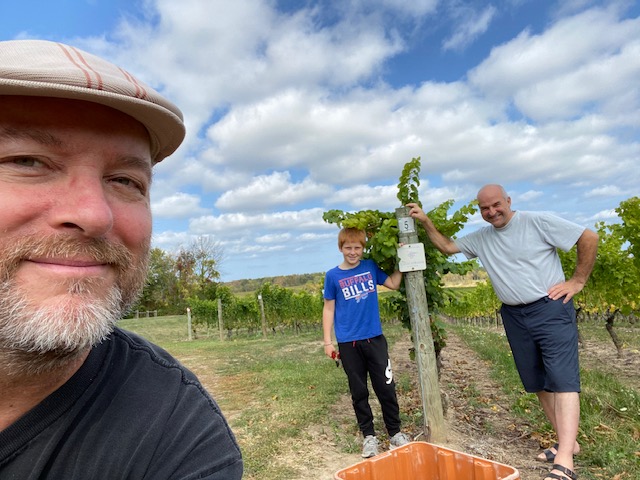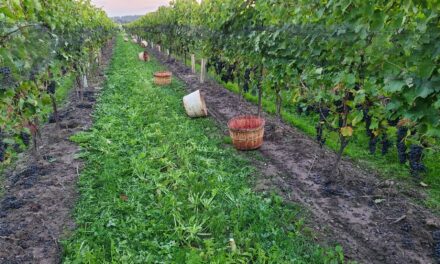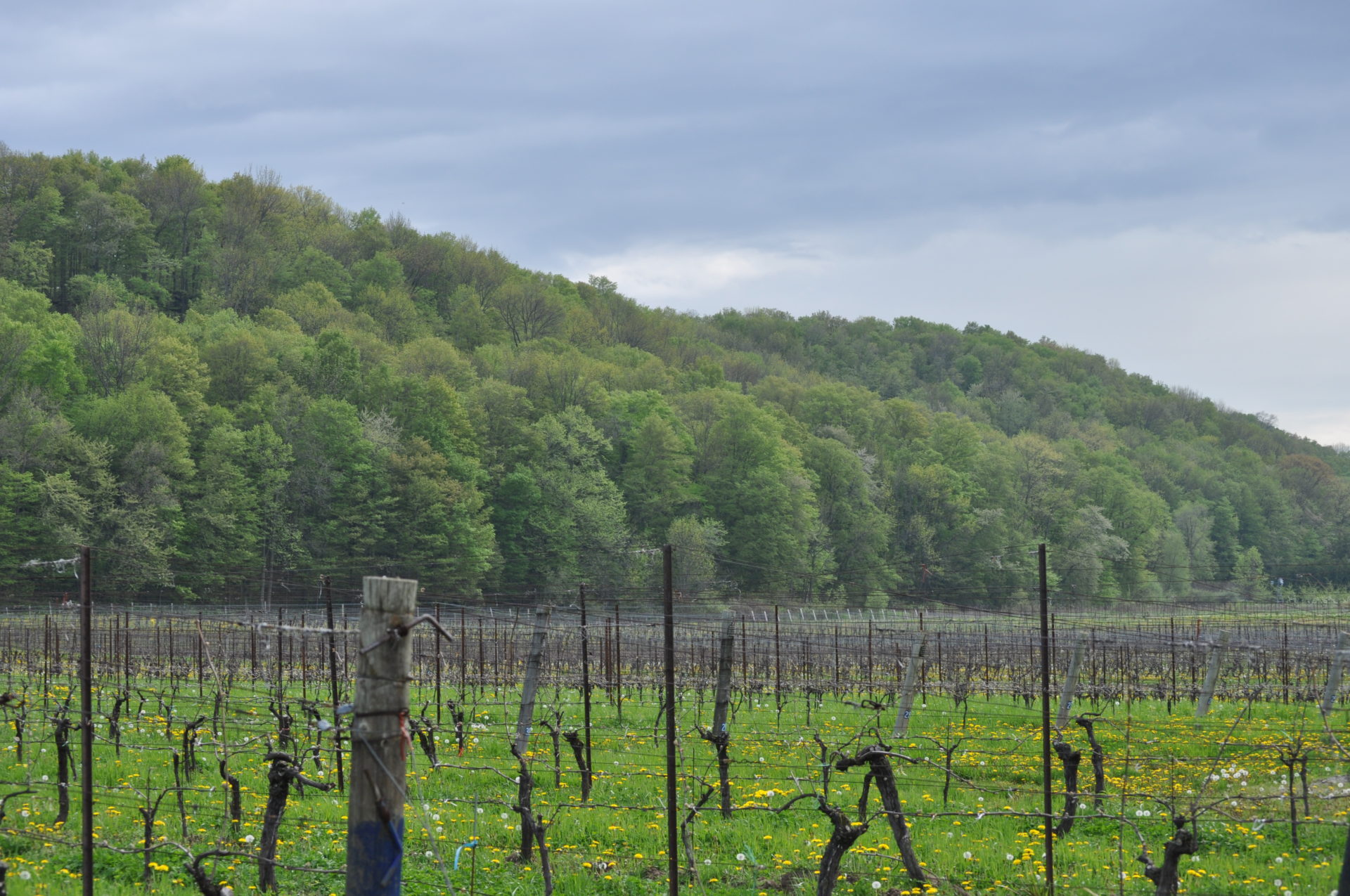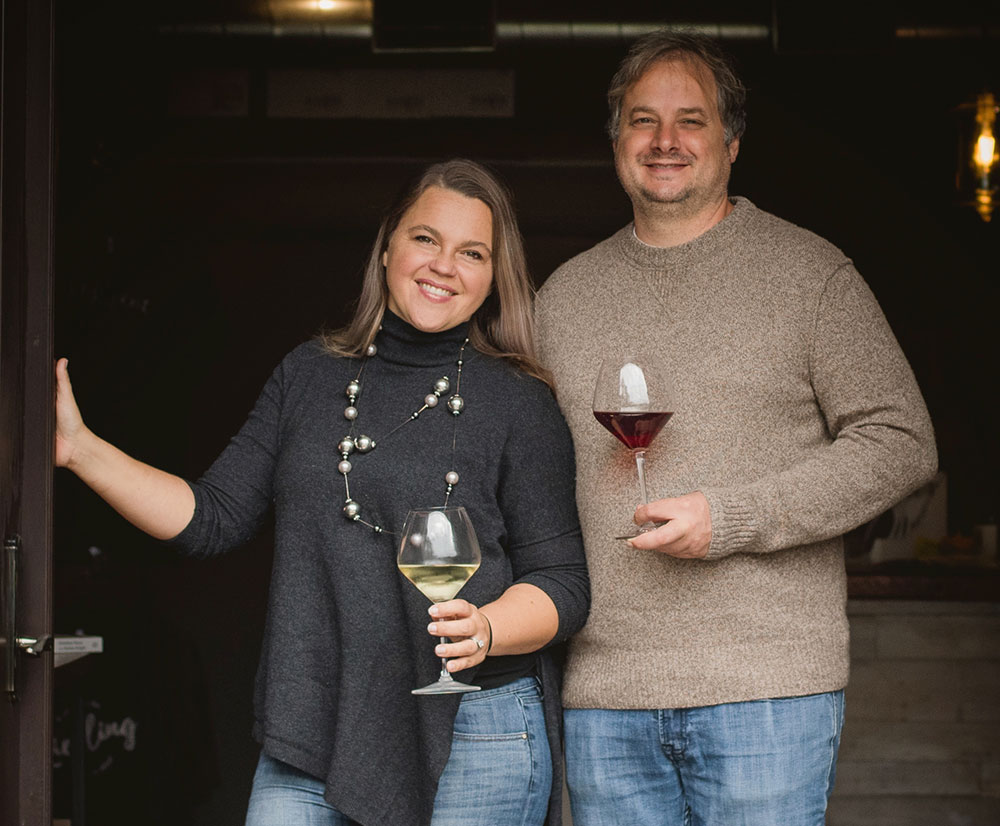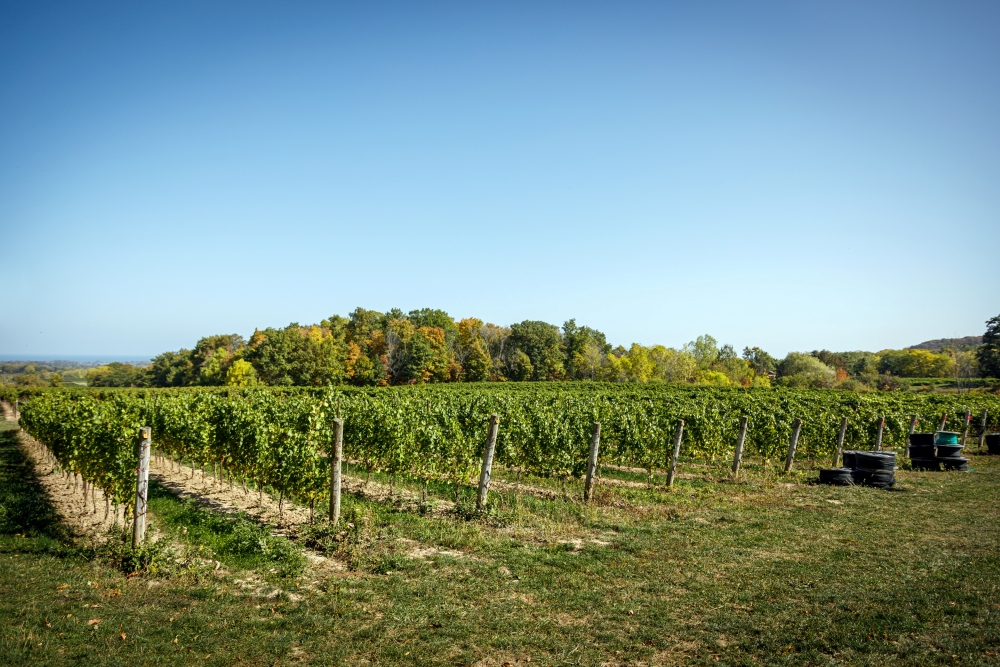
The Mottiar vineyard, Beamsville Bench, Ontario.
Single vineyards are a neat way to explore terroir. Sometimes they give you the chance to taste different winemakers’ interpretations of a particular terroir, other times letting you hone in on the character of a single block, or compare how different varieties express themselves in the same vineyard. Sometimes though, the human hand that tends a vineyard is so integral to the expression of that site that the definition of terroir seems incomplete without the vigneron. I’d suggest that this is the case with Malivoire winemaker Shiraz Mottiar’s eponymous vineyard.
Mottiar vineyard is located on Quarry Road in Beamsville atop the apex of the Bench where Shiraz Mottiar set down roots for both vineyard and home. He notes how lucky he is to have scooped up this little piece of Niagara terroir that perfectly dovetails with his personal sensibilities for wine. Indeed, the site seems to have chosen its vigneron in much the way a cat chooses its owner. He purchased the property and planted it to Vitis Vinifera in the early aughts along with his then partner. The wines he crafts from the site have quickly shown what an exceptional terroir this is.

Sorting fruit from the Mottiar vineyard, 2020 vintage.
THE VINEYARD
What makes the Mottiar Vineyard so unique is how the chemistry of the soils and the unique microclimate of this vineyard interact and leave a clear imprint on the wine. The vineyard is a stone’s throw from Tawse’s Quarry Road vineyard but sits within the Beamsville Bench VQA sub-region. It sits on a more gradual slope between the upper and lower Bench instead of the stark stepwise formations for which the Bench is more famous. This gradual slope provides less protection from the wind, but this is not necessarily a bad thing. While wind can threaten to knock delicate flowers off the vine, it also slows ripening and thickens the grape skins, amping up the concentration of all those delicious flavour components we enjoy in a good wine. The curve of the hill and nearby stands of trees trim the daylight, which also tames ripening.
There are two principal soils in the vineyard. The Pinot Noir block is planted on Chinguacousy Soil and is typical of the Bench. The Chardonnay block is planted over Tavistock soils, less commonly found in this part of the escarpment. These soils are glacial in origin, both a mix of silty clay and loam materials, but differ in source material. While both soils are well drained, the Tavistock soils are slightly more so since they tend to have more glacial rubble mixed in. This keeps the vines working hard to send their roots deep to access water. Both soils are valuable for viticulture because they are rich in minerals and particularly high in calcium. High calcium soils equal live wire acids which in turn makes for vibrant and ageable wines.
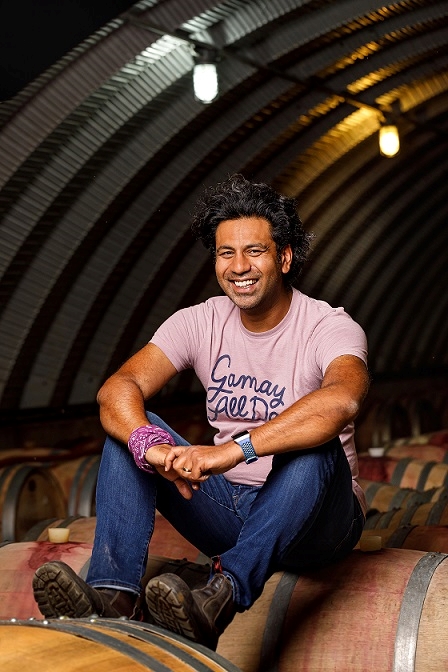
The man himself, winemaker Shiraz Mottiar.
THE VIGNERON
Shiraz planted the vineyard with a nearly fifty-fifty split of Pinot Noir and Chardonnay. Those of us who love the Chardonnay from his vineyard all owe Deborah Paskus a thank you for encouraging him to plant some instead of going all-in on Pinot Noir.
Deciding which grape varieties and clones to plant is a significant decision. Every clone brings a unique combination of flavours, aromas, and structure. Shiraz wanted as much clonal diversity as possible and so opted to plant a mix of several different Chardonnay and Pinot clones. In both cases, the clones are almost all Burgundian in origin. An additional “suitcase clone” sourced from local vineyards remains unnamed in both the Pinot Noir and Chardonnay blocks. A sort of winemaker’s secret sauce.
Shiraz handles the wines from the farming right on through the decision to bottle. In speaking with him, he is clearly dialled in on the technical aspects of winemaking but guides the wines to their final form in a hands-off kind of way. The French term for ageing wine, élevage, or to raise a wine, fits well.
TERROIR IN THE GLASS
There is an exciting tension and transparency of terroir when it comes to the wines from the Mottiar Vineyard. Take the Pinot Noirs for a start. Pinot Noir from Niagara shows a savoury edge with red fruit like morello cherry, cranberry. In contrast, Pinot Noir from here shows a darker fruit profile such as plum, black cherry, and a more structured frame. Any enthusiastic sommelier will quickly explain that darker fruit profiles in a wine indicate a warmer site or a warmer year. That is decidedly not the case with Mottiar Vineyard.
As Shiraz notes, the wines consistently come in with higher acids and lower pH. The apparent paradox is explained by the duelling forces of soil and sky. Winds thicken the grape skins lending that colour boost to the wine and some of the darker fruit aromas. The calcium and magnesium-rich soils thieve potassium away from the grapevine and result in grapes with higher acid levels even when fully ripe. Chardonnay here pushes citrus notes like lime peel and crisp granny smith apples in hi-def. They are also texturally intriguing, giving the impression of energy that is unexplained by brisk acids alone. I’d suspect that again has something to do with the calcium-rich soils.
THE WINES
For now, Shiraz crafts just a single Pinot and a single Chardonnay from the site. Perhaps in the future, we’ll get to taste a single site Melon from his vineyard. The vintages listed below are currently available for purchase on Malivoire’s website. Additionally, Malivoire makes library releases available to their Insiders Club.
2018 Malivoire Mottiar Chardonnay
2019 Malivoire Mottiar Pinot Noir



